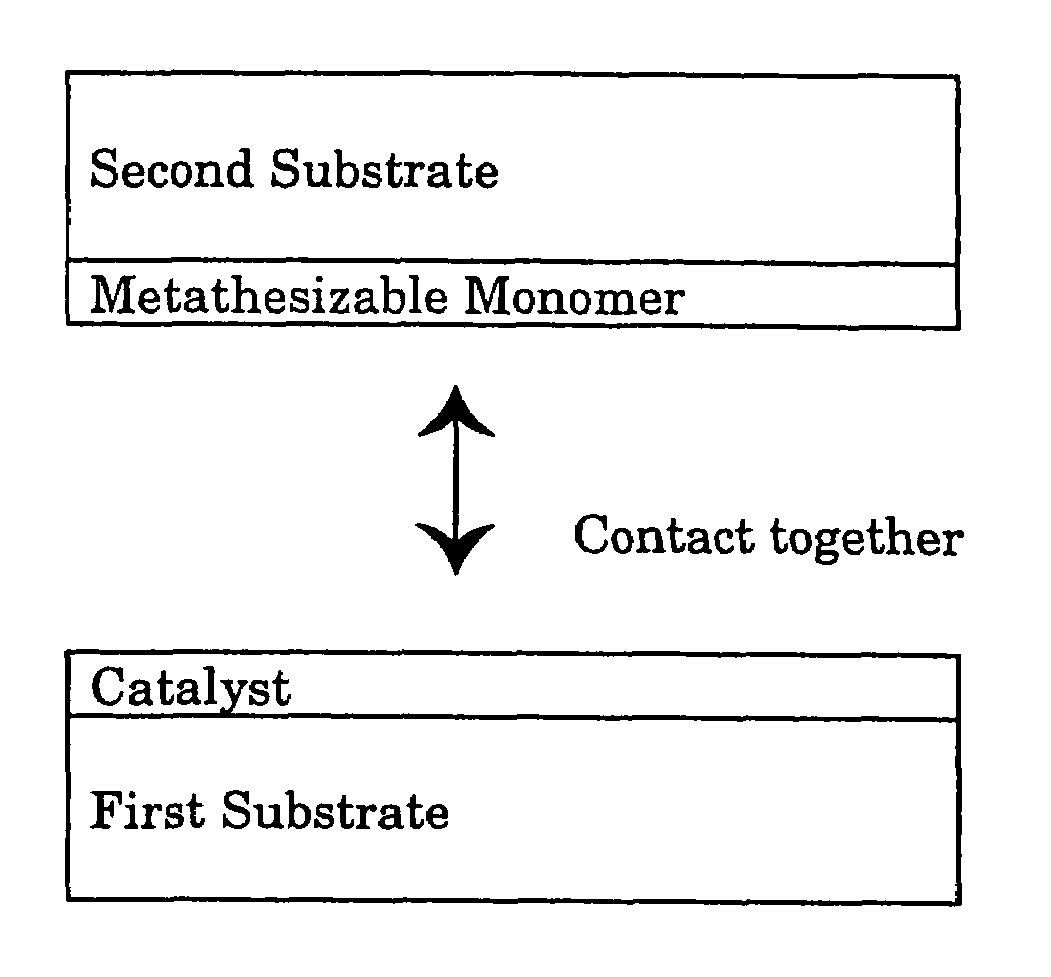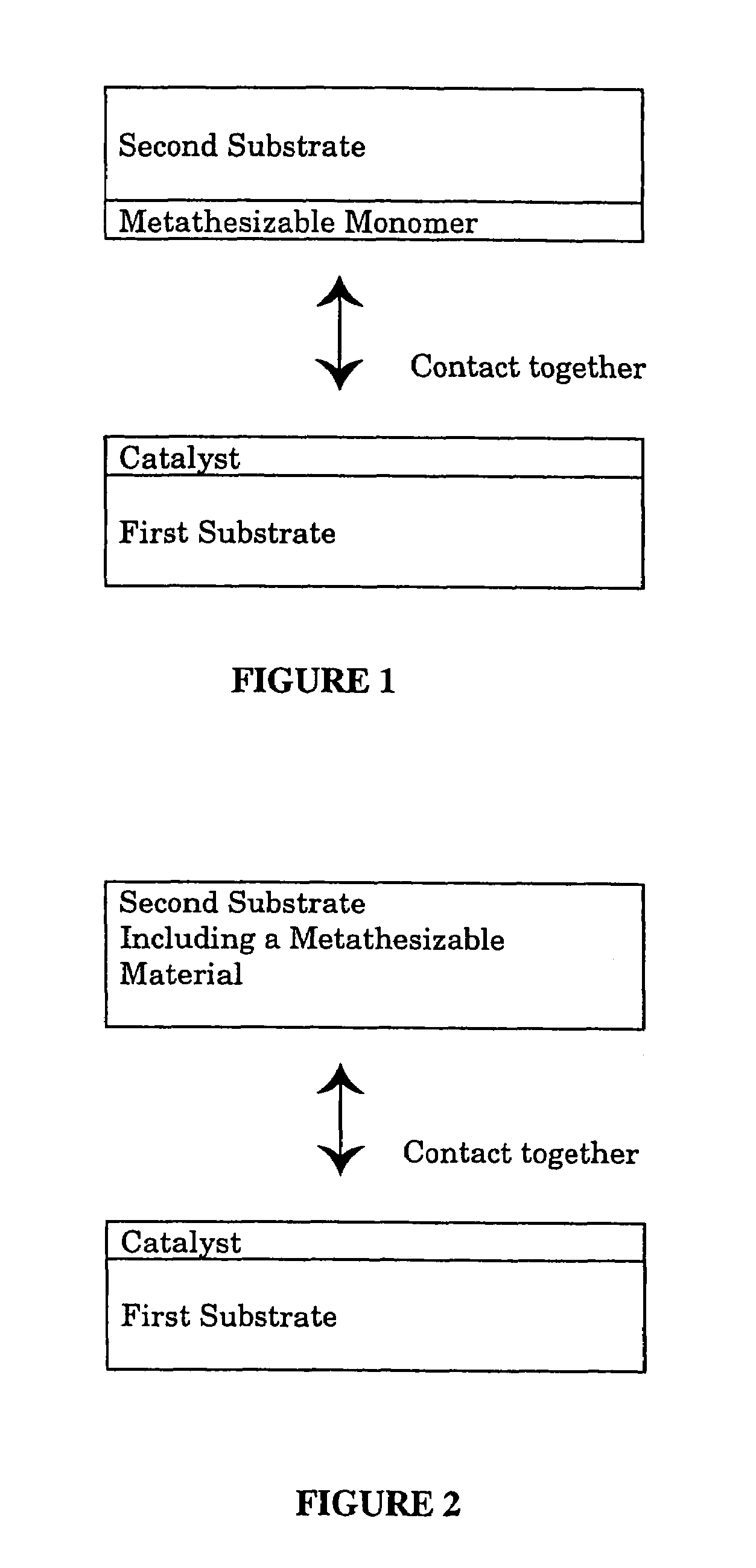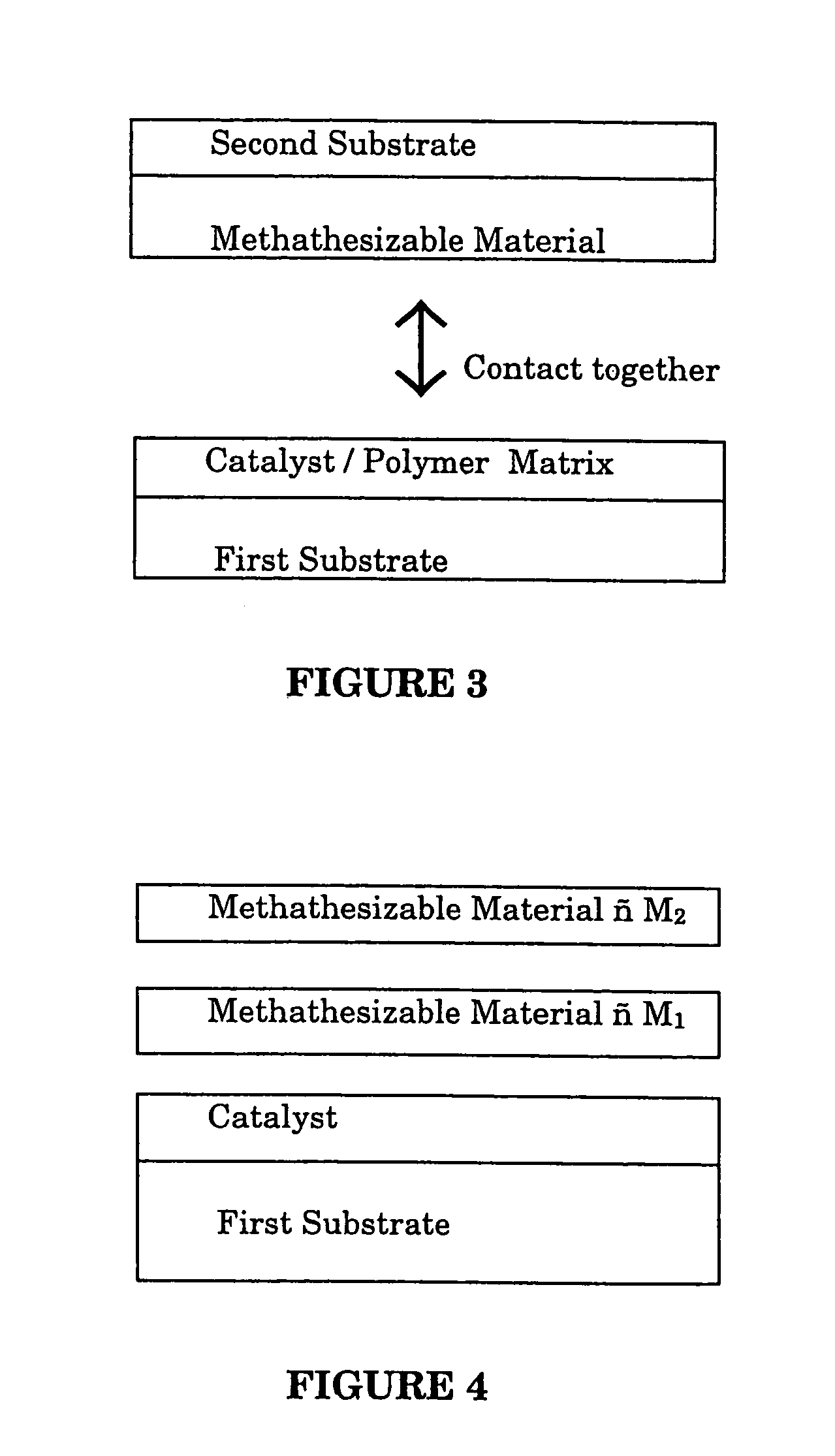Contact metathesis polymerization
a technology of contact metathesis and polymerization, which is applied in the direction of adhesive processes with surface pretreatment, transportation and packaging, and other domestic objects, can solve the problems of relative susceptibility of the bond to high temperature fluids and corrosive materials, and the difficulty in developing aqueous adhesives that perform at a level, and achieve the effect of facilitating bonding
- Summary
- Abstract
- Description
- Claims
- Application Information
AI Technical Summary
Benefits of technology
Problems solved by technology
Method used
Image
Examples
example 1
Bonding of EPDM-To-Metal—Application of Catalyst by Drip or Flooding Process
[0091]A catalyst solution was prepared by dissolving 0.021 g of RuCl2(PCy3)2═CHPh in 1.5 ml of CH2Cl2. Three grit-blasted steel coupons were prepared by pipetting 0.5 ml of the catalyst solution via syringe onto each coupon to just cover its surface (34.9 mm×25.4 mm) and the solvent allowed to evaporate for three to four minutes in the open laboratory atmosphere. This gave ≧7 ing of RuCl2(PCy3)2═CHPh per coupon. The metal coupons were usually washed with acetone and dried prior to application of catalyst solution, but this was not required. In this example, the coupons were unwashed. EPDM rubber strips were prepared by washing the bonding surface (34.9 mm×25.4 mm) with acetone, drying at room temperature for 3 to 4 minutes, and then applying via syringe 0.03 ml of ENB to each coupon and spreading it evenly with the needle tip. The catalyst-coated metal coupon was immediately placed on top of the ENB-coated E...
example 2
Bonding of EPDM-To-Metal
[0092]This testing was performed as preliminary screening to evaluate different application methods for bonding EPDM-to-metal. The process described in Example 1 was used to apply the RuCl2(PCy3)2═CHPh catalyst solution or ENB to either a grit-blasted steel coupon or EPDM rubber strip. The results are shown below in Table 1. Based on these results, it appears that the best bonding method occurred when the catalyst was applied to the metal and the ENB was applied to the EPDM. In Table 1 the substrate type listed under the catalyst or monomer is the substrate to which the catalyst or monomer is applied.
[0093]
TABLE 1Comparison Bonding between Application SurfacesMon-CatalystomerBondNotesmetalRubbergoodCould not pull apart by hand in tension.metalaMetalavariableOne sample pulled apart while the othertwo could not be pulled apart totally andshowed rubber tear.metalaMetalavariableFresh catalyst soln used. One sample pulledapart while the other two could not bepulle...
example 3
Delayed Bonding of Substrates Coated with Catalyst
[0094]A catalyst solution was applied to grit-blasted metal coupons according to the process described in Example 1, but the catalyst-coated coupons were allowed to dry and stand in ambient conditions in the laboratory (except for being covered from dust) for 3, 10, 20 and 33 days before bonding to the EPDM with ENB. All samples showed EPDM rubber tear when subjected to the 180° peel test. The 3 day samples had a mean load at maximum load of 291.49 (N) and a mean energy to break of 39.29 (J); 10 day samples had a mean load at maximum load of 298.32 (N) and a mean energy to break of 40.18 (J); 20 day samples had a mean load at maximum load of 262.79 (N) and a mean energy to break of 35.76 (J); and the 33 day samples had a mean load at maximum load of 313.26 (N) and a mean energy to break of 48.48 (J).
PUM
| Property | Measurement | Unit |
|---|---|---|
| temperatures | aaaaa | aaaaa |
| temperature | aaaaa | aaaaa |
| temperature | aaaaa | aaaaa |
Abstract
Description
Claims
Application Information
 Login to View More
Login to View More - R&D
- Intellectual Property
- Life Sciences
- Materials
- Tech Scout
- Unparalleled Data Quality
- Higher Quality Content
- 60% Fewer Hallucinations
Browse by: Latest US Patents, China's latest patents, Technical Efficacy Thesaurus, Application Domain, Technology Topic, Popular Technical Reports.
© 2025 PatSnap. All rights reserved.Legal|Privacy policy|Modern Slavery Act Transparency Statement|Sitemap|About US| Contact US: help@patsnap.com



